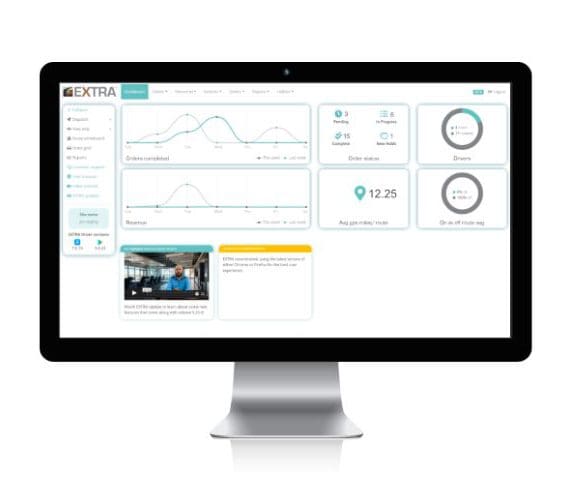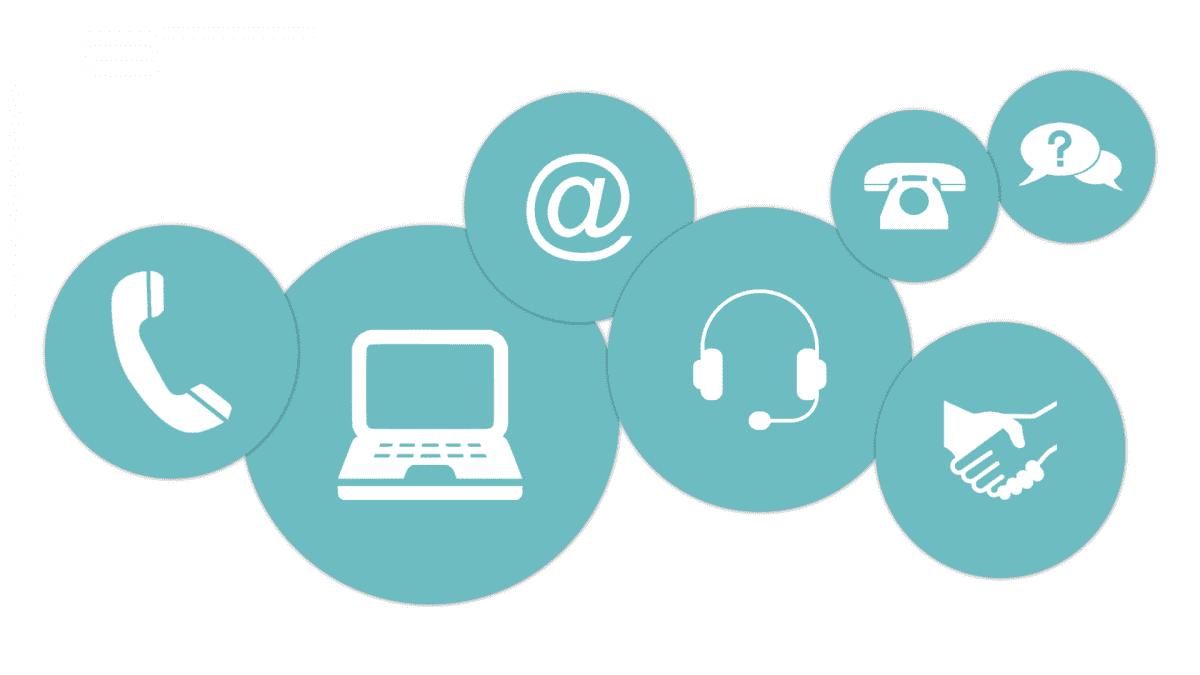
The key to success in B2B delivery is timely, reliable, accurate, and efficient delivery operations. To streamline and optimize delivery processes, many couriers and organizations are turning to centralized dispatching as a solution. Centralized dispatching is an innovative approach to B2B delivery that leverages technology and centralized control to manage and coordinate delivery operations.
This article explores what centralized dispatching means, its key benefits to B2B businesses, and the challenges and considerations of choosing a centralized dispatching system.
Understanding Centralized Dispatching
Centralized dispatching is a system where a courier service manages and coordinates all delivery operations from a central location. The packages are collected, stored, packed, and loaded for delivery, and dispatchers plan and manage routes from the same location. It is the opposite of decentralized dispatching, where delivery operations are managed from a network of locations.
An example of centralized dispatching is a local bakery that bakes, packs, and delivers fresh bread to multiple customers from one location.
Centralized dispatching can help B2B businesses improve operational efficiency by streamlining operations and improving the allocation of delivery resources. Businesses can also use centralized dispatching systems to track and monitor deliveries in real time.
The improved coordination and operational efficiency brought by centralized dispatching results in smoother operations, reduced costs, and higher customer satisfaction rates.

Benefits of Centralized Dispatching for B2B Deliveries
B2B businesses can benefit from centralized dispatching in several ways, including enhanced order fulfillment and timeliness, improved resource allocation and cost savings, streamlined communication and exception handling, scalability and flexibility, and data-driven decisions and operations.
Enhanced Order Fulfillment and Timeliness
Enhanced order fulfillment and timeliness can be achieved through the combination of centralized dispatching and optimized route planning.
Centralized dispatching systems analyze factors like delivery location, traffic conditions, and delivery windows to generate the most optimal routes. Dispatchers can track deliveries in real time to identify any issues or delays and make the necessary adjustments, such as rerouting drivers. This optimization minimizes travel time and distance, resulting in cost savings and ensuring timely deliveries.
To further streamline the delivery process, centralized dispatching systems can also sequence deliveries. Sequencing determines the order in which the driver will make the deliveries while considering factors like urgency and delivery windows. It helps minimize travel distance and time to make timely deliveries even in tight delivery windows.
Centralized dispatching systems can also prioritize urgent orders so the business can meet the needs of B2B clients with critical timelines or service level agreements to fulfill. This ensures that crucial orders are given precedence and promptly attended to.
Improved Resource Allocation and Cost Savings
Maximizing the efficiency and productivity of your fleet, centralized dispatching improves resource allocation and coordination.
Efficient resource allocation is achieved through central control, enabling better coordination and utilization of all vehicles in the fleet. By implementing centralized dispatching systems, businesses can ensure that their vehicles are fully utilized and follow optimized routes that minimize empty miles. Real-time tracking and monitoring capabilities empower dispatchers to identify and address any inefficiencies promptly, preventing them from escalating into larger problems.
Centralized dispatching systems can also help you save costs by reducing fuel consumption. They minimize the distance traveled through optimized routes and delivery sequences, reducing empty miles and idle time. These systems can also automate tasks like order processing and route planning, reducing the manual labor required and the associated costs. Furthermore, they also minimize delays and expenses related to late deliveries.
The efficient allocation of resources brought by centralized dispatching allows businesses to accomplish more deliveries with fewer resources. So, B2B businesses and couriers save money because they don’t have to add more vehicles or other resources to their fleet.
Overall, centralized dispatching leads to cost savings in various ways, including:
- Reducing operating costs because you only pay for one location’s utilities, rent, and salaries.
- Decreasing inbound costs, which refers to the money spent to get the goods from the manufacturer to the delivery hub.
- Eliminating human error through automation and the costs associated with it.
Streamlined Communication and Exception Handling
Centralized dispatching facilitates seamless communication between dispatchers, drivers, and B2B clients. When all the information is in one place and deliveries are managed from the same location, it is easy to share and collect information like delivery details, special requirements, delivery windows, etc. It can reduce misunderstandings, delays, and errors, improving operational efficiency.

In addition, dispatcher, driver, and B2B client communication can all be enabled through centralized dispatching systems. Communication technology is critical for logistics success, and by facilitating it in real-time, you’ll see improved operations and enhanced stakeholder’s satisfaction. For example, dispatchers can use real-time information to communicate with drivers about schedules, assignments, and routes. With the updated technology, drivers no longer need to wait until they are back at the dispatching hub to voice their concerns, and they can have them addressed in real time.
Sometimes unexpected events, circumstances, or changes can affect the planned delivery process. Centralized dispatching systems are designed to handle these exceptions. They facilitate swift communication and can reroute drivers or adjust resource allocation. Their ability to handle exceptions and address changes in delivery requirements effectively minimizes disruptions and ensures timely delivery.
Scalability and Flexibility
Centralized dispatching for B2B deliveries improve scalability and flexibility, which allows businesses to expand and adjust operations without disruptions or compromising efficiency. With enhanced flexibility, businesses can expand and contract operations to meet dynamic consumer needs.
Centralized dispatching systems are built on scalable infrastructure that can handle increased data processing needs as your business grows. They also have advanced routing algorithms that can optimize routes and sequences while accommodating changes in real time, no matter the complexity of the delivery network.
As delivery operations expand, a centralized dispatching system becomes essential for optimizing resource allocation.
By automating key tasks like order processing, scheduling, and route planning, businesses can seamlessly handle increasing orders and deliveries without errors. A centralized dispatching system streamlines these processes, ensuring smooth operations as the business grows. It eliminates manual inefficiencies and improves accuracy, allowing for effective handling of higher volumes of orders and deliveries.
Data Analytics and Insights
According to a study by the Council of Supply Chain Management Professionals, 93% of shippers and 98% of third-party logistics firms feel that data-driven decision-making is crucial to supply chain activities. Additionally, 71% of them believe that data-driven decisions improve quality and performance.
Centralized dispatching systems capture vast amounts of data like customer preferences, delivery times, delivery costs, delays, successful deliveries, exceptions, etc. Businesses can leverage this data to make data-driven decisions that can help them:
RESOLVE ISSUES PROACTIVELY
Data collected and processed in real time can help dispatchers and businesses identify potential issues and address them before they escalate. This ensures smooth deliveries and minimizes disruptions that could lower customer satisfaction.
CONTINUOUS IMPROVEMENT
Data-driven decision-making allows businesses to continuously improve based on their performance metrics. Data analytics can reveal improvement areas, such as resource allocation and route efficiency, enhancing delivery performance over time.
PERSONALIZED SERVICE
Customer data like preferences and requirements can provide insights into customer behavior. Understanding customer behavior allows businesses to personalize their delivery services to enhance customer satisfaction and loyalty.
PREDICTIVE ANALYTICS

Predictive analytics has the most significant impact on the supply chain. It improves supply chain visibility, reduces risks and costs, and optimizes performance. Predictive analytics enables you to anticipate customer demands and optimize your operations accordingly. This approach ensures you meet customer needs even in periods of high demand. You can leverage machine learning and artificial intelligence to identify patterns that can be used to forecast.
Considerations for Implementing Centralized Dispatching in B2B Delivery
As we have discussed, implementing centralized dispatching in B2B operations has several benefits. But it also presents several potential challenges, including the following:
Potential Challenges for Implementing Centralized Dispatching in B2B
- Integrating the centralized dispatching system with existing technology infrastructure can be complicated. The system must be compatible with your IT infrastructure and allow seamless communication.
- Managing the large volumes of data involved in centralized dispatching isn’t always easy. You need proper infrastructure, data governance, and security measures.
- Your employees are accustomed to the existing workflows and processes, so centralized dispatching system implementation may be met by resistance. You must conduct effective change management to ease the transition.
- As with any new system, providing a comprehensive training guide and skill development programs to your employees will help facilitate a successful implementation. Training also ensures they can maximize the system’s productivity.
You must address or overcome these challenges to implement a solution that aligns with your business goals, maximizes operational efficiency, enhances customer satisfaction, and drives overall success in your B2B delivery operations.
Factors to Consider Before Implementing Centralized Dispatching
Compatibility of Technology Solutions
You must leverage technology solutions to enhance the efficiency and effectiveness of the dispatching process. This includes fleet management systems, dispatching and routing systems, and mobile applications. Technology solutions can help you automate tasks, track and monitor deliveries, optimize route planning, etc.
As you choose the technology for your B2B centralized dispatching, evaluate different options as you consider their scalability, capabilities, integration, and data security features. It will help you choose the most appropriate solutions for your situation and technology stack. You should also check whether the vendor offers support, as it can be critical to the implementation and adoption.
The right technology solutions align with your business needs and provide value in the long term.
Change Management Strategies
Employees who don’t understand the system or are accustomed to existing workflows and processes may resist the change. Resisting it can lead to failure or inefficient or ineffective use.
So, you should create an effective change management strategy. Change management involves clearly communicating the reasons for the change and the new system’s benefits to your employees. You should also involve them in decision-making and address their concern and resistance. Provide adequate training and support to ensure they all understand how to work with the new system.
With effective change management, you can ensure a smooth transition with full support and acceptance from your employees.
Data Security and Privacy
Centralized dispatching involves handling sensitive data like customer information, driver information, delivery status, communication logs, etc. This logistics data is at risk of data breaches.
You should evaluate the security measures you need to protect your data’s confidentiality, integrity, and availability. Ensuring data security and privacy benefits you in the following ways:
- Fosters customer trust
- Ensures compliance with regulations and data protection laws to avoid legal issues and penalties
- Minimizes the risk of data breaches
- Protects your reputation and brand from damage
- Ensures your business operations continue by avoiding the losses and damage that can result from cybersecurity incidents
Some data security measures you need include encryption, access controls, regular security audits, and secure data storage
Customization and Configuration

Every business is unique and has unique needs. When choosing to switch to a centralized dispatch system, it is imperative that you don’t skip over the systems customization and configuration abilities.
A customizable system can be tailored to reflect unique delivery processes and special requirements. You can program it to meet your workflows, eliminate unnecessary steps, and automate tasks. For example, you can configure it to handle specialized equipment and specific customer preferences.
Customization also allows seamless integration with various systems like an ERP or CRM system, enhancing efficiency and eliminating data silos.
By putting in work ahead of time customizing and configuring your centralized dispatching system, you increase your chances of adoption and increased user experience all while enabling your system to reflect familiar terms, workflows, colors, and user interfaces.
Performance Metrics and Reporting
Most businesses use different performance metrics and have different reporting requirements that align with their goals. As you choose between centralized dispatching systems, ensure your choices can capture the performance metrics you use and generate the necessary reports. It can help you effectively measure resource utilization, customer satisfaction, and other key performance indicators.
Utilizing Elite EXTRA for your B2B Deliveries
In summary, centralized dispatching offers numerous benefits, including improved operational efficiency, enhanced order fulfillment, optimized resource allocation, streamlined communication, scalability, flexibility, and data-driven decision-making. However, B2B businesses may face challenges during implementation, such as compatibility issues and resistance to change.
To overcome these challenges, it is crucial to consider factors such as compatibility with existing technology infrastructure, security and privacy measures, and customization and configuration options. By carefully evaluating these factors, you can ensure that the centralized dispatching solution you choose aligns with your business needs and provides long-term value.
When it comes to selecting a reliable B2B software solution for centralized dispatching, Elite EXTRA’s last mile software suite is a top notch choice. With our powerful solution, you can successfully implement and manage your centralized dispatching operations. Request a live, customized demo today to discover how our solution can benefit your B2B centralized dispatching system.
Sources
https://www.researchgate.net/publication/
https://cdn2.hubspot.net/hubfs/1592424/on-demand-route-optimization-whitepaper.pdf
https://www.track-pod.com/blog/centralized-dispatching/
https://www.penskelogistics.com/pdfs/2017-CSCMP-SOLReport.pdf
https://www.bcg.com/publications/







